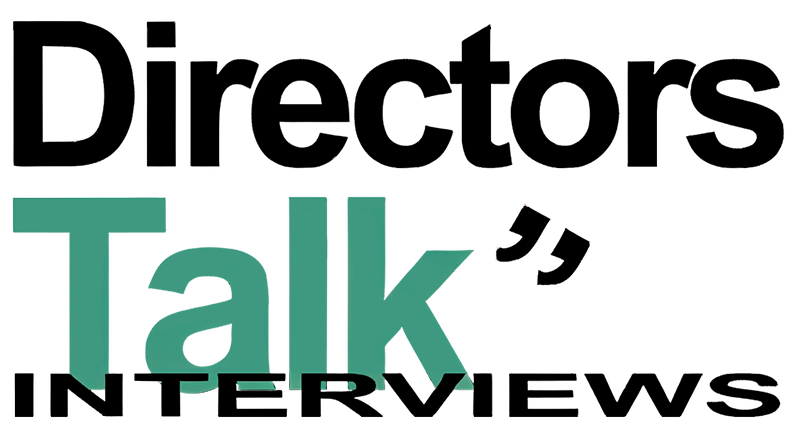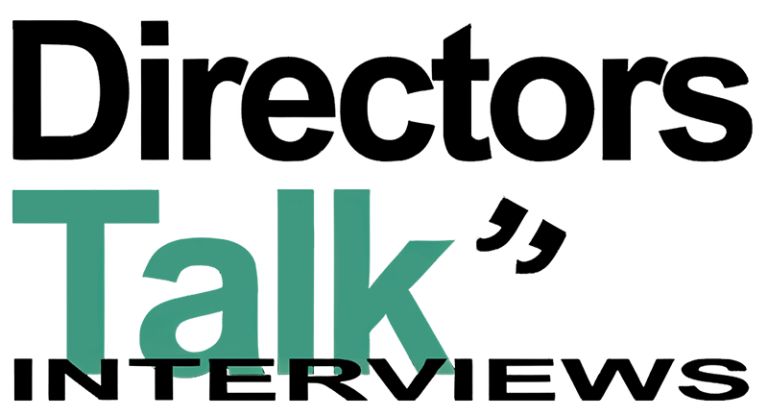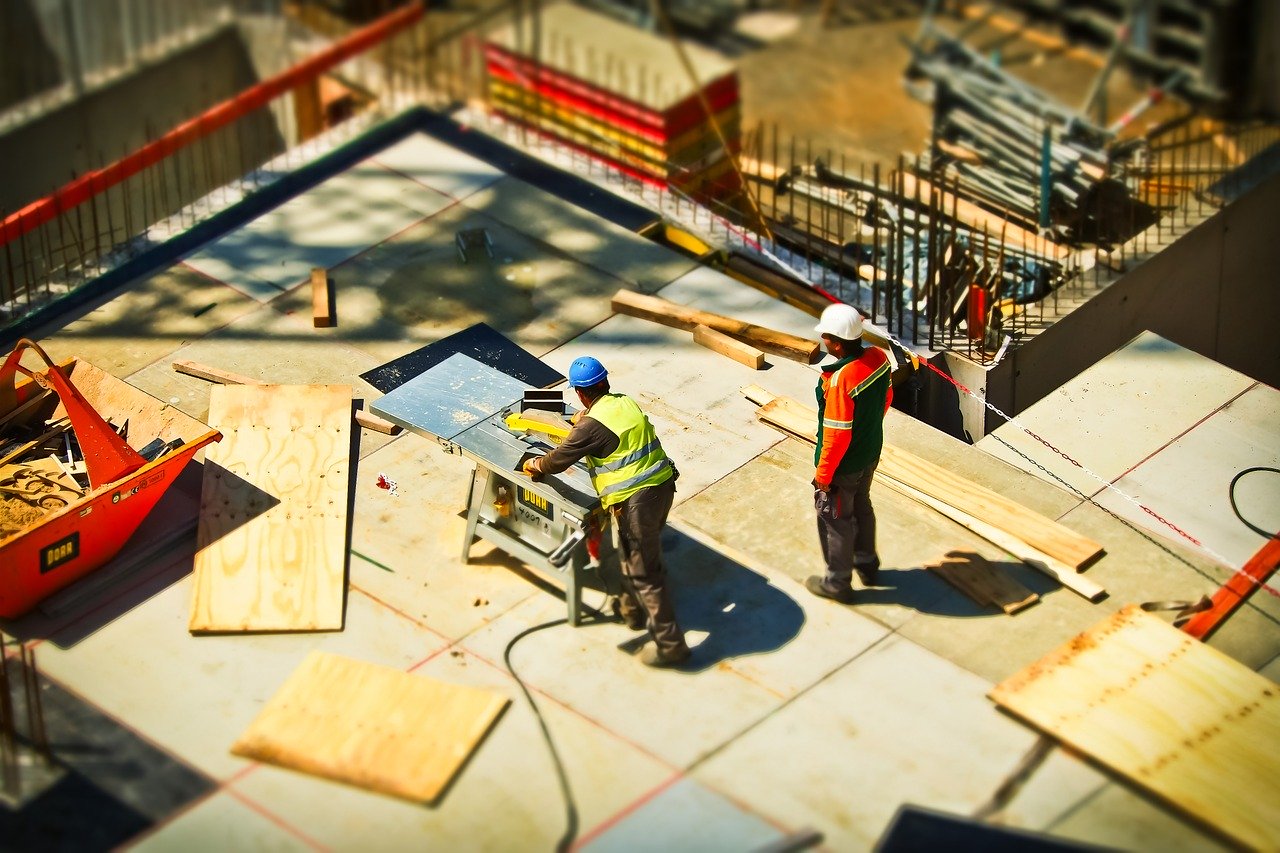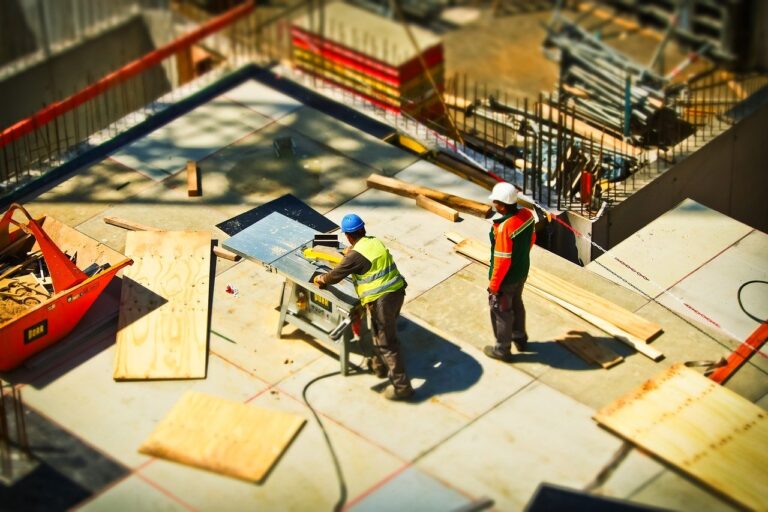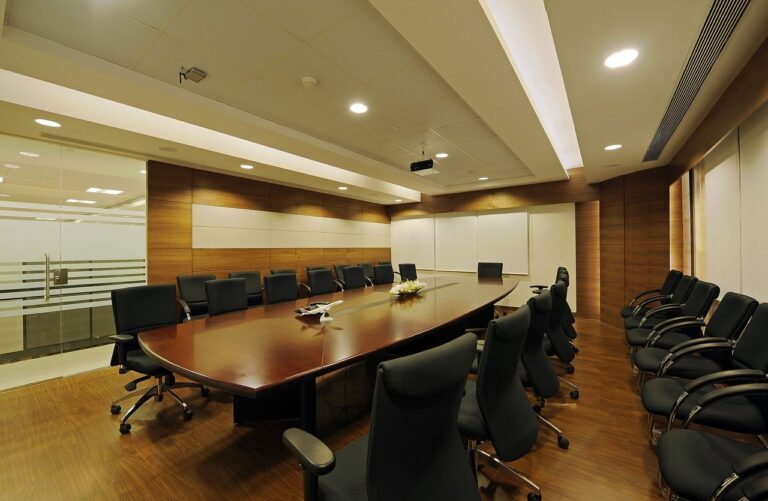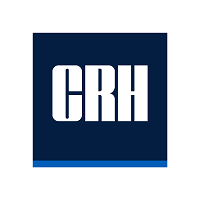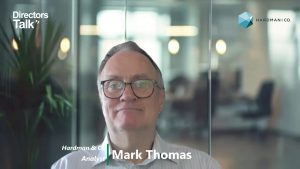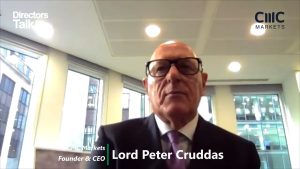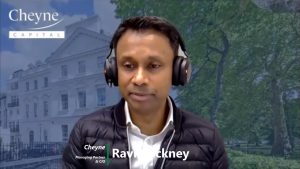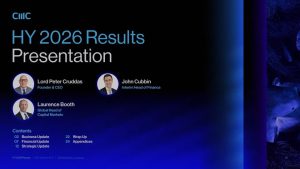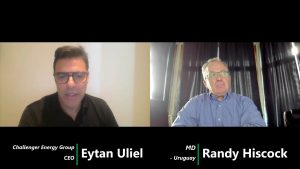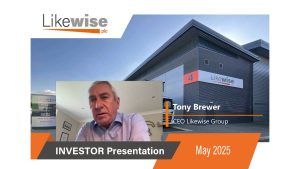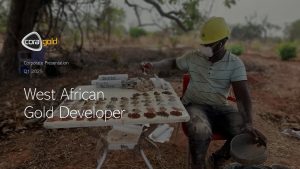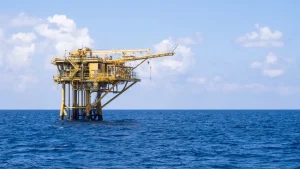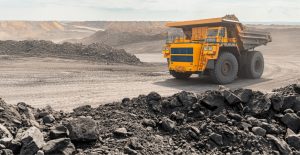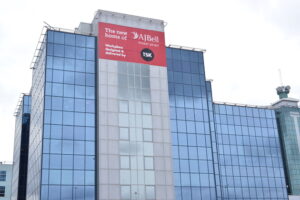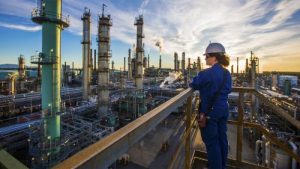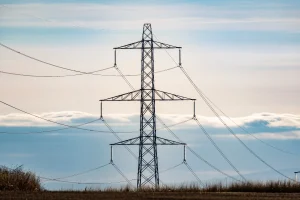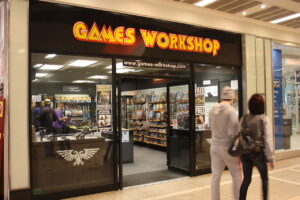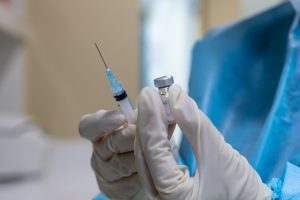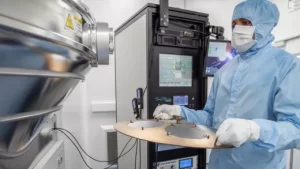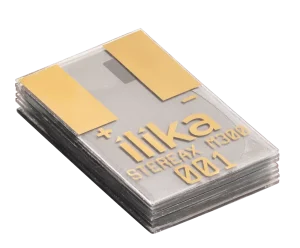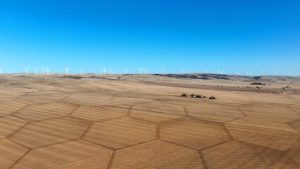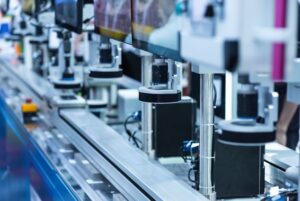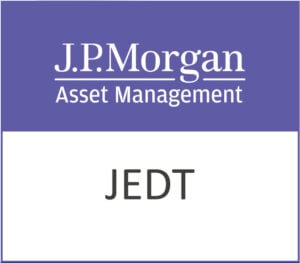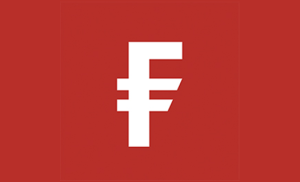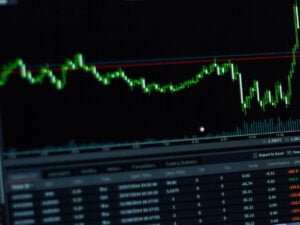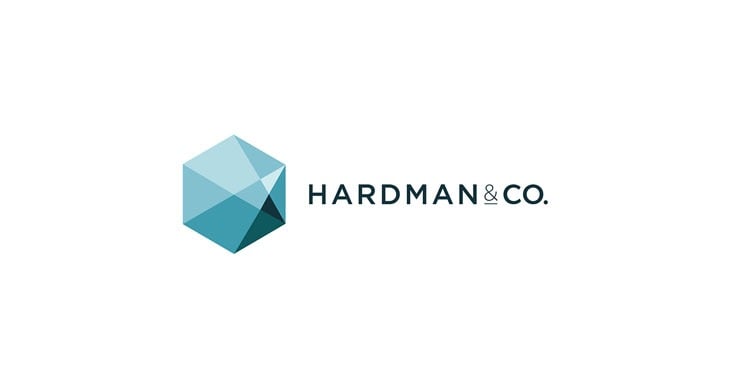CRH plc (LON:CRH) has announced its 2020 interim results.
Key Highlights
· Health & safety remains our number one priority
· Robust performance in a challenging environment
· Decisive reaction to evolving market backdrop
· EBITDA and margin ahead despite lower sales
· Record cash generation; further underpinning financial strength & flexibility
· $3.8bn improvement in net debt position; $10bn of available liquidity
· Continued dividend delivery; interim dividend in line with prior year
| H1 Summary Financials | 2020 | LFL |
| Sales Revenue | $12.2bn | -3% |
| EBITDA | $1.6bn | +2% |
| EBITDA Margin | 13.0% | +70bps |
| Operating Cash Flow | $1.0bn | +$0.7bn |
· Q3 EBITDA is expected to be in line with prior year
· Limited visibility for Q4 and into 2021
· Focused on continuing to improve profitability, margins & cash
Albert Manifold, Chief Executive, said today:
“Our first-half performance is testament to the hard work and dedication of all our people during a very challenging and uncertain period. As ever, health and safety is our number one priority and our primary focus is to provide a safe working environment for all of our employees. As a Group we took swift and comprehensive action in response to the COVID-19 crisis, and our ability to flex our cost base and deliver improved profitability, margins and cash generation in a rapidly evolving environment demonstrates the strength and resilience of our business. The outlook for the rest of the year and into 2021 remains uncertain and is dependent on an improving health situation across our markets.”
Announced Thursday, 20 August 2020
2020 Interim Results
Health & Safety
The health and safety of our people remains our number one priority and our approach to workplace safety is uncompromising in our response to the COVID-19 pandemic. In this regard, our primary focus is to ensure that we provide a safe working environment for our employees, contractors and customers, enabling them to carry out their activities in accordance with the various health and safety protocols currently in place across our markets.
Trading Overview
The global COVID-19 pandemic had a material impact across the construction markets in which we operate. First-half sales for the Group were 5% behind, with like-for-like1 sales 3% behind the first half of 2019, as a positive performance in the first quarter was followed by significant disruption in the second quarter.
· First-half like-for-like sales for our Americas Materials operations were 1% behind 2019 as the impact of COVID-19 related shutdowns in our North region was partly offset by strong demand in our West region, which experienced more favourable weather conditions than prior year, and improved pricing.
· In Europe Materials, a solid start to the year was offset by the impact of COVID-19 related government restrictions across a number of key markets in Europe and in Asia. As a result, sales in the first half were down 11% on a like-for-like basis against the same period in 2019.
· Like-for-like sales in Building Products were 2% ahead of 2019. Strong residential repair, maintenance & improvement (RMI) demand in North America resulted in positive volumes together with pricing progress across most platforms. This was partly offset by the impact of COVID-19 restrictions on a number of our operations in Europe and North America, particularly those serving the non-residential construction sector.
With a strong focus on cost rationalisation to mitigate the financial impacts of the pandemic, EBITDA of $1.59 billion was slightly behind 2019 (H1 2019: $1.62 billion) and was impacted by $65 million of one-off costs primarily due to COVID-19 related restructuring items. On a like-for-like basis Group EBITDA was 2% ahead of 2019, while the like-for-like EBITDA margin increased 70bps.
· Solid price progression, good cost control and lower energy costs resulted in like-for-like EBITDA in Americas Materials up 20%.
· In Europe Materials, like-for-like EBITDA was 28% behind primarily reflecting the significant impact of COVID-19 restrictions in the United Kingdom (UK), other Western European markets and the Philippines.
· Strong operating leverage on increased sales in Building Products, reflected good commercial discipline, cost rationalisation and ongoing profit improvement initiatives. Like-for-like EBITDA was 11% ahead.
First-half profit before tax was $518 million, compared with a profit of $717 million in the first half of 2019 primarily reflecting lower profit on divestments compared with the first half of 2019. Note 2 on page 18 analyses the key components of the first-half 2020 performance.
Mitigating Actions
In response to the COVID-19 crisis, the Group took immediate and decisive actions to right-size our cost base in line with evolving demand levels. These actions included:
· Suspension of all non-essential and discretionary expenditure;
· $0.2 billion reduction in fixed costs;
· $0.8 billion improvement in working capital outflow;
· $0.2 billion reduction in capital expenditure; and
· Consolidation of operating locations to adapt to lower levels of activity.
The Group continued to support our businesses by investing in operational improvements and capacity increases to serve growing demand in markets which were less affected by pandemic restrictions.
Outlook
The near-term outlook for economic and construction activity across our markets remains uncertain and is dependent on an improving health situation. Based on recent trading trends we expect like-for-like sales in the third quarter to be slightly behind the same period in 2019, with Americas Materials slightly behind, Building Products broadly in line, while Europe Materials is expected to be behind prior year levels. Overall EBITDA for the third quarter is expected to be in line with the third quarter in 2019. There is limited visibility for the fourth quarter of the year and as a result the Group is not in a position to provide full-year guidance at this time. The longer-term prospects for CRH remain positive, benefiting from significant financial strength and resilience together with a portfolio of high-quality assets in attractive markets.
[1] See pages 35 to 37 for glossary of alternative performance measures (including EBITDA, like-for-like (LFL)/organic and Net Debt/EBITDA) used throughout this report. Operating cash flow is net cash inflow from operating activities as reported in the Condensed Consolidated Statement of Cash Flows on page 14.
Americas Materials
Against the backdrop of regional variations in pandemic restrictions and generally more favourable weather conditions than prior year, Americas Materials reported first-half like-for-like sales 1% behind 2019. Despite the modest decline in sales, like-for-like operating profit was 59% ahead of 2019, as price progression, lower energy costs and strong cost control offset volume challenges. As a result, margins increased compared with the first half of 2019. The reduction in sales was primarily driven by COVID-19 restrictions in the second quarter which impacted volumes across all lines of business particularly in our Northern regions of Quebec, New York, Pennsylvania and Washington following a strong first quarter performance; however good like-for-like sales growth in all products in our West region was experienced due to strong demand, solid backlogs and mild weather.
Aggregates
Total and like-for-like aggregates volumes were in line with 2019. Strong demand in West was offset by lower activity in North which was impacted by COVID-19 restrictions and in South due to unfavourable weather. Total and like-for-like prices increased by 2%, with mid-single digit increases in North and South and flat pricing in West, influenced by sales mix, which resulted in good margin expansion overall.
Asphalt
A reduction in asphalt volumes in the second quarter, as higher volumes in West were unable to offset volume challenges in North and South, resulted in first-half total and like-for-like volumes 5% behind 2019. Average prices were flat however margins expanded benefiting from lower liquid asphalt costs, good cost control and operational efficiencies.
Readymixed Concrete
Readymixed concrete volumes were 4% behind 2019 on a like-for-like basis with strong demand in certain areas in West offset by lower volumes in North and South; overall average prices increased 6% compared with same period in 2019. Strong price increases were experienced particularly in our North and West regions supported by commercial excellence initiatives.
Paving and Construction Services
Paving and construction services revenues were 4% behind the first half of 2019 on a total and like-for-like basis with mixed activity levels across our regions. Profitability benefited from higher margin projects in our South region.
Cement
Sales volumes in the United States (US) were 4% ahead of 2019 on a total and like-for-like basis, as strong volume trends in West supported by growth in our downstream businesses drove performance. Strong price realisation across all markets, operational improvements and synergy delivery resulted in improved operating profits.
Operations in Canada were impacted by COVID-19 related lockdown measures from the beginning of April. The timing and impact of restrictions varied across regions with volumes behind prior year. Prices were ahead of prior year with all regions showing positive or flat prices.
Demand for cement in Brazil has been resilient to the impacts of the pandemic and volumes and prices were ahead of prior year.
Europe Materials
Despite a strong start to the year, Europe Materials like-for-like sales and like-for-like operating profit fell by 11% and 59% respectively, reflecting the impact of site closures from mid-March to late-May as a result of COVID-19 in the UK, Ireland, France and the Philippines, in particular. Germany, Switzerland, the Benelux and most of Eastern Europe were less impacted as construction activity continued and in certain cases was boosted by government projects and increased local demand.
UK
Widespread plant shutdowns in the UK during March, April and May as a result of COVID-19 resulted in volumes finishing behind in all products compared to 2019 with aggregates volumes showing the most resilience and readymixed concrete being impacted the most. Favourable cement and lime pricing and cost savings did not compensate for the lower volumes and sales and operating profit in the UK finished well behind the first half of 2019.
Western Europe
Construction in Ireland was severely impacted by government restrictions in response to COVID-19 with volumes in all products behind prior year. Pricing remained resilient with improvements on prior year and, despite a significant pick-up in demand in June, sales and operating profit for the first half of the year finished behind 2019. In France, volumes were down across the materials businesses due to the impact of COVID-19 lockdowns. Price improvements, strong volumes in our precast business at the beginning of the year and stringent cost control partly offset the impacts on sales and operating profit, which finished behind 2019. Sales in the Benelux were ahead of 2019 reflecting higher volumes in the Dutch structural business and robust pricing across all products. This was only partly offset by lower volumes across the materials businesses from the COVID-19 related closures of construction sites in Belgium. Strong pricing, combined with cost savings initiatives resulted in operating profit ahead of the first half of 2019. In Denmark, like-for-like sales and operating profit were behind 2019 due to pressure on volumes in our structural business. The continued positive impact of project activity on aggregates volumes in Finland, improved pricing on solid cement volumes and unusually mild weather in the first quarter of 2020 resulted in increased sales and operating profit despite a slowdown in the residential sector and lower volumes in readymixed concrete. In Switzerland, price progress in cement and readymixed concrete and a focus on cost savings initiatives partly compensated for a decline in volumes due to challenging market conditions; consequently like-for-like sales and operating profit finished behind 2019. With limited impact from COVID-19, cement volumes and pricing in Germany improved.
Eastern Europe
Poland benefited from a mild winter, maintaining solid cement volumes and higher aggregates and asphalt volumes. Price growth offset lower readymixed concrete volumes delivering like-for-like sales and operating profit ahead of 2019. In Ukraine, improved cement pricing more than offset lower cement volumes which were impacted by competitive pressure from imports and a decline in residential construction. Lower input costs and tight cost control further contributed to higher operating profit than 2019. A strong performance was achieved in Romania, with sales and operating profit ahead of 2019 driven by robust pricing, cost savings initiatives and higher volumes due to favourable weather in the first quarter of the year, a strong pipeline of projects and increased demand in the residential sector. In Hungary and Slovakia, like-for-like sales and operating profit increased from the first half of 2019, with price progression and good cement volumes driven by strong infrastructure demand and mild weather earlier in the year. Cement volumes were in line with 2019 in Serbia due to a strong first quarter which offset lower volumes in the second quarter. Improved pricing and cost savings initiatives positively impacted operating profit which finished ahead of 2019.
Asia
Cement volumes in the Philippines declined as a result of COVID-19 related plant shutdowns. Reduced volumes and lower prices resulted in sales and operating profit behind the first half of 2019; however, the impact on profitability was partly offset by lower costs. The Group also has a share of profit after tax from its stake in Yatai Building Materials in China which is reported within the Group’s share of equity accounted investments’ results. Despite continued pricing pressure in Yatai Building Materials, sales and operating profit were ahead of the first half of 2019 due to higher volumes driven by government stimulus packages and reduced costs.
Building Products
In the first half of the year Building Products experienced solid pricing and improved volumes supported by robust homecenter demand, particularly in North America, along with more favourable early season weather in North America and Europe. The positive performance was partly offset by the business disruption as a result of COVID-19, as our European operations were particularly impacted by government restrictions from mid-March to late-May along with shutdowns in certain areas of North America. Reduced construction activity in the non-residential sector was more than offset by higher demand in residential RMI as people were confined to their homes during the pandemic. As a result, like-for-like sales were 2% ahead of 2019.
Rapid actions to mitigate the impact of the pandemic, commercial and operational initiatives along with improved selling prices helped deliver margin improvement and like-for-like operating profit was 14% ahead of 2019.
Architectural Products
With significant volume growth in both North America and Europe along with solid pricing, like-for-like sales in Architectural Products increased 12% compared with the first half of 2019, reflecting year-on-year increases in most major markets and product lines. Following steady demand in the first quarter supported by mild weather conditions and selling price increases, our operations in North America experienced a significant increase in demand in the second quarter across hardscapes, dry-mix as well as lawn and garden products as people remained at home during government restrictions. Trading in Europe benefited from volume growth in Germany and Poland.
Operating profit exceeded the same period last year with margin expansion due to volume efficiencies and benefits from profit improvement initiatives including actions taken to control fixed cost overheads during the COVID-19 crisis.
Building Envelope
Lower sales volumes across our C.R. Laurence and architectural glass operations as a result of the COVID-19 crisis resulted in like-for-like revenue 10% behind the first half of 2019. Pricing remained stable. C.R. Laurence was impacted due to a number of US “shelter in place” orders which adversely affected many small customers in the residential, interior and RMI segments.
Operating profit was behind 2019 due to the lower volumes partly offset by cost management initiatives to ensure input and labour costs remained in line with reductions in volumes.
Infrastructure Products
Selling price increases and volume growth in the North American utility enclosures business which was buoyed by strong demand from the communications sector, were offset by lower volumes in the European and Australian businesses; like-for-like sales were flat. The European operations, particularly in the UK and France, were impacted by COVID-19 restrictions while the Australian business was affected by a downturn in the telecoms market.
With a strong focus on cost control including plant rationalisation, performance improvement measures and good pricing, operating profit was ahead of the first half of 2019.
Construction Accessories
Like-for-like sales were 9% behind the first half of 2019 as a result of COVID-19 related business disruption which significantly impacted our operations in the UK, France and Belgium from mid-March. Mild weather conditions in the first quarter along with a strong order backlog in Germany partly offset the weaker trading. The US operations were also impacted by COVID-19 restrictions along with some challenging market conditions.
Operating profit was behind 2019 impacted by the lower volumes but partly offset by performance initiatives including production efficiencies, commercial excellence, procurement savings and overhead cost control.
Other Financial Items
As announced on 28 February 2020, the Group has changed the currency in which it presents its financial results from euro to US Dollar.
Depreciation and amortisation charges of $826 million were in line with 2019.
Divestments and asset disposals during the period generated total profit on disposals of $9 million (H1 2019: $166 million) which primarily related to the divestment of precast concrete production assets in our Building Products Division. The profit of $166 million in 2019 primarily reflected the profit on the divestment of the European Shutters & Awnings business.
The Group’s $3 million share of losses from equity accounted investments was behind the first half of 2019 (H1 2019: $16 million profit) mainly due to the divestment of the Indian cement joint venture in 2019 along with weaker performances in a number of operations due to COVID-19 restrictions.
Net finance costs for the period were lower than the first six months of 2019 at $252 million (H1 2019: $261 million) primarily due to lower interest rates introduced by central banks globally to deal with the economic impact of the COVID-19 pandemic.
First-half profit before tax was $518 million (H1 2019: $717 million) and the interim tax charge, which represents an effective tax rate of 21.6% of profit before tax, has been estimated, as in prior years, based on current expectations of the full year tax charge. Earnings per share were 25% lower than last year at 51.3c (H1 2019: 68.1c), primarily reflecting lower profit on divestments compared with the first half of 2019.
Dividend and Share Buyback
In light of the Group’s resilient first-half performance and despite the disruption of COVID-19 across our markets, the Board has decided to maintain the interim dividend, now declared in US Dollar, at 22.0c per share. It is proposed to pay the interim dividend wholly in cash on 25 September 2020 to shareholders registered at the close of business on 4 September 2020. Further details on the dividend process, including the default payment currency and currency election options, are set out in note 7 on page 24.
In March 2020, the Group completed the most recent tranche of its share buyback programme, returning a further $220 million of cash to shareholders. This brings total cash returned to shareholders under the Group’s share buyback programme to $2 billion since its commencement in May 2018. Share buyback decisions are based on an ongoing assessment of the capital needs of the business and general market conditions. In light of the recent market volatility, the Board has paused the Group’s share buyback programme until further notice.
Balance Sheet and Liquidity
Net debt of $7.8 billion at 30 June 2020 was $3.8 billion lower than the figure reported at 30 June 2019 (H1 2019: $11.6 billion). A first-half cash inflow from operating activities of $1.0 billion is an improvement of $0.7 billion over prior year (H1 2019: $0.3 billion) primarily due to strong working capital control. As in prior years, we expect a strong operating cash inflow in the second half of 2020 and for year-end 2020 debt metrics to show an improvement on prior year (Year-end 2019 Net Debt/EBITDA 1.7x).
In April 2020, the Group drew down its €3.5 billion revolving credit facility further strengthening its cash position. In April 2020, the Group successfully issued a total of €2 billion in euro denominated bonds at a weighted average maturity of seven years and with a weighted average interest rate of 1.35%. As at 30 June 2020, the Group had $10 billion of cash with sufficient liquidity to meet all maturing debt obligations for the next 4.9 years.
The Group continues to maintain its strong balance sheet and a strong investment grade credit rating with a BBB+ or equivalent rating with each of the three main rating agencies.
Acquisitions and Divestments
In H1 2020, the Group invested $129 million on eight acquisitions (including deferred and contingent consideration in respect of prior year acquisitions).
On the divestment front, the Group completed four transactions and realised total business and asset disposal proceeds of $184 million, inclusive of $115 million relating to the receipt of deferred proceeds from prior year divestments.
H1 2020 Acquisitions and Investments
The Building Products Division completed three bolt-on acquisitions in H1 2020 amounting to a total spend of $69 million. The largest acquisition was in Infrastructure Products where it acquired the assets of Highline Products in Tennessee providing increased participation in the enclosures market and an attractive geographic presence in the polymer concrete market.
The Americas Materials Division completed two bolt-on acquisitions in the US for a total spend of $23 million, while the Europe Materials Division completed three small acquisitions for an investment of $5 million.
In addition, the Group paid $32 million of deferred and contingent consideration in H1 2020.
H1 2020 Divestments and Disposals
The largest divestment in H1 2020 was the sale of precast concrete production assets located in Spokane, Washington completed by our Building Products Division, which received $18 million in proceeds. Americas Materials divested of its asphalt and construction business in the Florida Panhandle for total proceeds of $12 million. Two smaller divestments were completed in our Europe Materials Division.
In addition to these business divestments, the Group realised proceeds of $39 million from the disposal of surplus property, plant and equipment and other non-current assets. Furthermore, $115 million cash proceeds were received in H1 2020 relating to prior year divestments, of which $92 million related to deferred consideration for CRH’s previous equity interest in My Home Industries Ltd., India.
